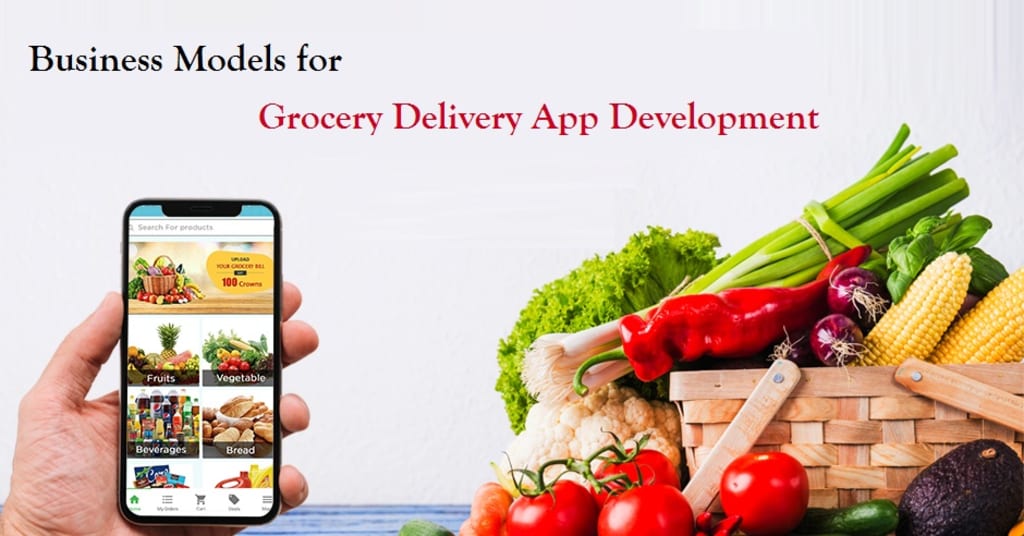Business Models for Grocery Delivery App Development
on-demand grocery delivery app development services

During the Covid-19 pandemic lockdown, the need of groceries, medicines, and daily requirements was a big challenge for one and all. To stay afloat in such trying times, B2B companies and startups sought the alternative to take their business online through on-demand grocery delivery app development services. This move proved beneficial for both consumers and on-demand grocery store app providers.
The shopping trend has changed and now people are more comfortable ordering from grocery delivery apps instead of physically visiting the stores for their essentials. The on-demand grocery delivery market stands around 62% of India’s retail segment. The current scenario places it between USD 500 million and USD 1 billion with multifold possibilities in the coming years. The online grocery segment is seeing a CAGR of 13% currently. Businesses aware of these statistics are rapidly taking the services of a grocery delivery app development company for the development of a grocery store app.
5 Business Models for Development of On-Demand Grocery Delivery Apps

Inventory Model
As the name suggests, products are purchased from farmers and distribution vendors and stored. Customer orders received on the site are delivered through an internal/external supply network. The products bear the label and logo of the site, irrespective of the providers. Through this model of directly purchasing the goods and managing their own supply chain, businesses gain higher profit margins. This model is expensive as a warehouse needs to be maintained with quality controls, administration, and transport facility. The initial investments are helping to contain market price fluctuations and increase profitability.
Shopping Model
The customer places the grocery order on the grocery store app and makes the payment. The grocery delivery app sends the order to the grocery store registered on the portal. The delivery provider connected to the site collects the order from stores and delivers it to the consumer. This is a very popular model of grocery delivery app.
Multi-Vendor Marketplace Model
This model doesn’t handle or stock up the goods. It connects consumers to sellers. Customers place their orders on the website which is then redirected to the on-demand grocery store on the site. Transport is provided through an in-house logistics network, which collects the goods from the seller and transports it to the customer. The delivery products bear the brand name of the store. The multi-vendor model is highly successful in the market due to its role in maximizing conversion.
Hyper Local Model
This model caters to a small locality having self-sufficient stores. The hyper local distribution channels claim to deliver products such as dairy, fruits & vegetables, groceries, home shopping, etc. within an hour’s time. This is a recent introduction in the e-commerce grocery segment.
Online Selling Model
This model offers various avenues for making money through increased sales depending on the integration of your chosen channel:
Merchandising
Selling your own merchandise online helps in earning direct money through this channel. Launching your brand and creating your brand presence is the first step to undertake before selling your branded product range to customers.
Commissions
Commissions can be charged from sellers associated with your website. Commission fees can be different according to product ranges and target markets.
Subscriptions
Regular customers of dairy, groceries, and fruits, etc. can opt for subscriptions to get free delivery.
Service Charges
Regular customers can be charged service charges for the delivery of daily goods. This will entice them to avail subscriptions to save service charges.
Memberships
Offering membership advantages to customers such as free shipping, early birds and no spike charges helps in boosting sales. Sellers can benefit through loyalty packs and continue business on the site.
Promotions
You can charge from shops and sellers for promoting their product views through banner advertisements on searches and homepage. You can also give them an incentive bonus by taking memberships.
Conclusion
The on-demand grocery delivery app service is the hottest trend in the e-commerce segment today. Companies interested in this money-making proposition can hire a grocery delivery app developer through a reputed grocery app development company. You need to define which model from the above suits your target audience. You can have the grocery delivery app developed from scratch or get a clone app customized depending on your market reach.
About the Creator
keith laurance
Keith Laurance, a Tech Blogger and Entrepreneur working with Octal IT Solution. I'm passionate about my work and want to spread knowledge everywhere, so everyone can take advantage of the latest technologies and trends.






Comments
keith laurance is not accepting comments at the moment
Want to show your support? Send them a one-off tip.